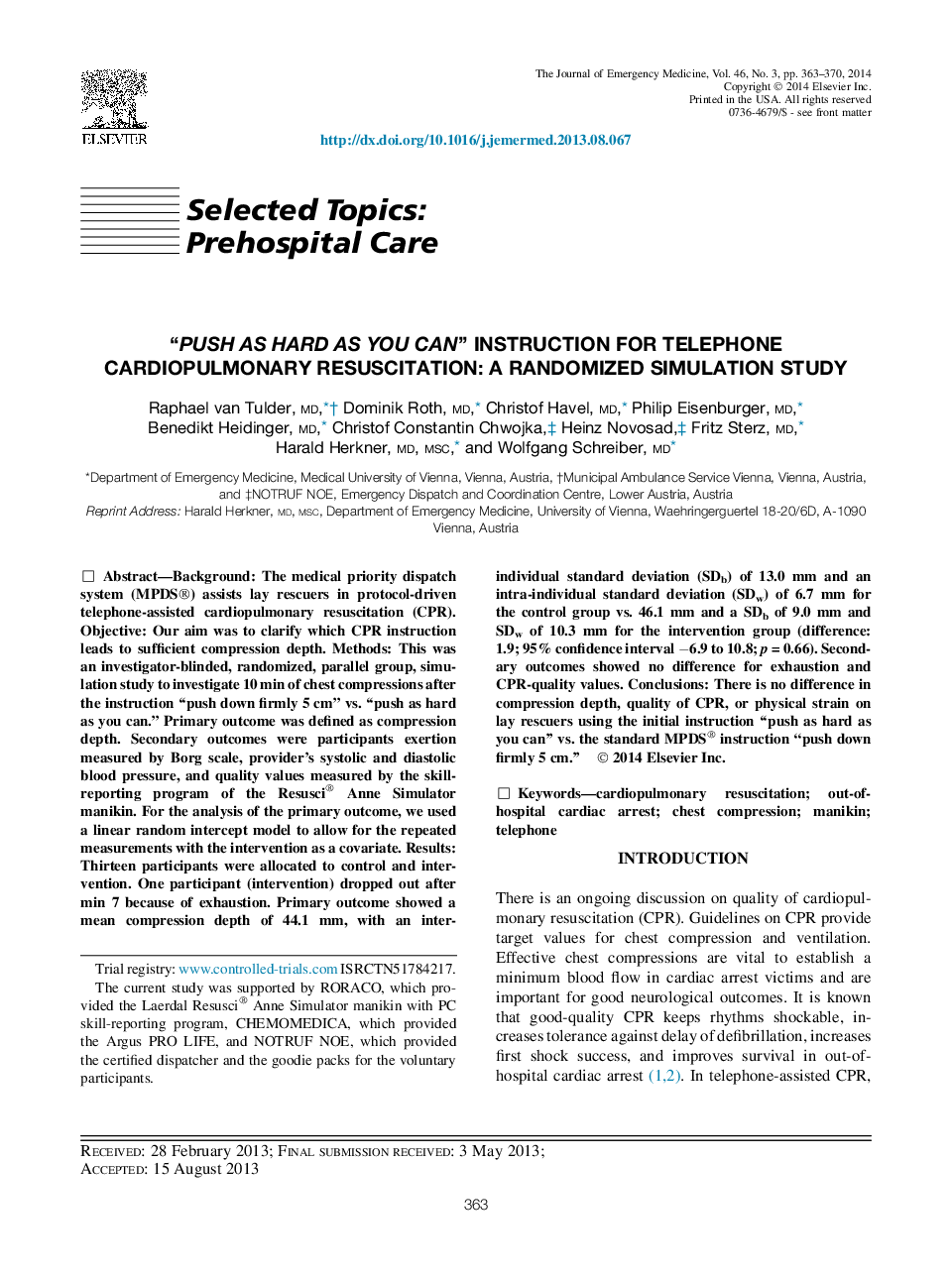| Article ID | Journal | Published Year | Pages | File Type |
|---|---|---|---|---|
| 3247675 | The Journal of Emergency Medicine | 2014 | 8 Pages |
BackgroundThe medical priority dispatch system (MPDS®) assists lay rescuers in protocol-driven telephone-assisted cardiopulmonary resuscitation (CPR).ObjectiveOur aim was to clarify which CPR instruction leads to sufficient compression depth.MethodsThis was an investigator-blinded, randomized, parallel group, simulation study to investigate 10 min of chest compressions after the instruction “push down firmly 5 cm” vs. “push as hard as you can.” Primary outcome was defined as compression depth. Secondary outcomes were participants exertion measured by Borg scale, provider's systolic and diastolic blood pressure, and quality values measured by the skill-reporting program of the Resusci® Anne Simulator manikin. For the analysis of the primary outcome, we used a linear random intercept model to allow for the repeated measurements with the intervention as a covariate.ResultsThirteen participants were allocated to control and intervention. One participant (intervention) dropped out after min 7 because of exhaustion. Primary outcome showed a mean compression depth of 44.1 mm, with an inter-individual standard deviation (SDb) of 13.0 mm and an intra-individual standard deviation (SDw) of 6.7 mm for the control group vs. 46.1 mm and a SDb of 9.0 mm and SDw of 10.3 mm for the intervention group (difference: 1.9; 95% confidence interval −6.9 to 10.8; p = 0.66). Secondary outcomes showed no difference for exhaustion and CPR-quality values.ConclusionsThere is no difference in compression depth, quality of CPR, or physical strain on lay rescuers using the initial instruction “push as hard as you can” vs. the standard MPDS® instruction “push down firmly 5 cm.”
